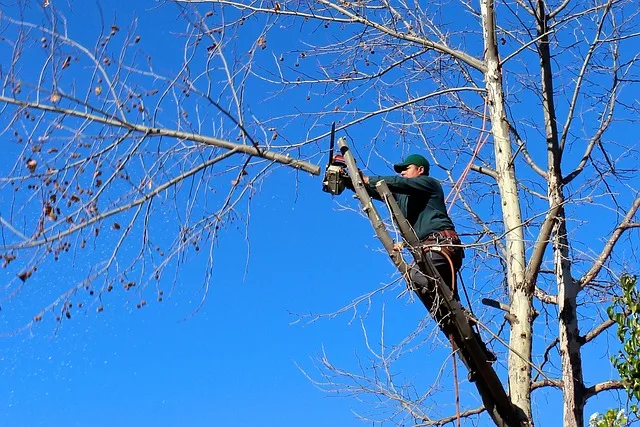Reducing Carbon Footprint in Tree Maintenance Services
Introduction
Tree maintenance services play a crucial role in maintaining urban and natural ecosystems. Proper tree care enhances biodiversity, prevents deforestation, and improves air quality. However, traditional tree maintenance practices can contribute to carbon emissions through the use of heavy machinery, fuel consumption, and improper waste disposal. By adopting eco-friendly techniques, tree service providers can significantly reduce their carbon footprint and contribute to a more sustainable future.
This article explores various strategies for minimizing carbon emissions in tree maintenance services, including sustainable equipment, responsible waste management, efficient operational planning, and innovative technologies.
1. Sustainable Equipment and Machinery
a. Transition to Electric and Battery-Powered Tools
Traditional tree maintenance relies heavily on gas-powered chainsaws, trimmers, and stump grinders, which emit greenhouse gases (GHGs). A more sustainable alternative is to use electric or battery-powered equipment, which has the following benefits:
- Lower emissions – No direct carbon dioxide (CO2) release during operation.
- Reduced noise pollution – Creates a quieter and more eco-friendly work environment.
- Less reliance on fossil fuels – Helps transition towards cleaner energy sources.
b. Investing in Energy-Efficient Machinery
Equipment manufacturers are now producing more energy-efficient models of chainsaws, chippers, and grinders that consume less fuel while maintaining optimal performance. Look for EPA-certified or energy-efficient rated machinery.
c. Regular Equipment Maintenance
Poorly maintained equipment consumes more fuel and emits higher levels of pollutants. Regular servicing, including cleaning air filters, sharpening blades, and tuning engines, enhances efficiency and longevity, leading to lower emissions over time.
2. Sustainable Fuel Alternatives
a. Using Biofuels for Machinery
Biofuels, such as biodiesel and ethanol-blended fuels, reduce carbon emissions compared to traditional gasoline and diesel. These fuels are derived from renewable sources like plant oils and algae, making them a greener alternative.
b. Hybrid and Electric Fleet Vehicles
Tree maintenance companies rely on trucks and service vehicles to transport equipment and personnel. Switching to hybrid or fully electric fleet vehicles can significantly cut down fuel emissions.
c. Route Optimization for Fuel Efficiency
Using GPS and route-planning software helps in reducing unnecessary travel, thereby saving fuel and lowering emissions. Optimized routes also help workers complete tasks faster and more efficiently.
3. Sustainable Tree Care Practices
a. Mulching Instead of Transporting Waste
Instead of hauling tree waste to landfills, on-site mulching provides a sustainable alternative. Mulch enhances soil quality, retains moisture, and reduces the need for chemical fertilizers.
b. Composting Organic Waste
Composting leaves, branches, and other organic debris prevents methane emissions from landfills and creates nutrient-rich soil that can be reused in landscaping and reforestation projects.
c. Selective Pruning and Smart Cutting Techniques
Unnecessary tree cutting increases carbon loss. Using selective pruning techniques, arborists can remove only dead or hazardous branches while preserving the tree’s structure and carbon sequestration ability.
4. Reducing Carbon Footprint in Tree Removal
a. Tree Relocation Instead of Removal
In many cases, trees scheduled for removal can be relocated rather than cut down. Specialized machinery can uproot trees safely and transplant them to another area.
b. Promoting Tree Preservation Instead of Cutting
Whenever possible, arborists should prioritize tree health restoration techniques such as soil aeration, fertilization, and pest control instead of complete removal.
c. Repurposing Removed Trees
Instead of discarding tree trunks and branches, they can be repurposed into furniture, firewood, or construction materials to reduce waste.
5. Green Waste Management and Recycling
a. Wood Recycling and Reuse
Tree maintenance services generate large amounts of wood waste. Recycling programs can repurpose this wood into:
- Lumber for construction.
- Wood chips for playgrounds and walking trails.
- Paper products through sustainable forestry practices.
b. Carbon Offsetting Programs
Tree service providers can participate in carbon offset initiatives by planting new trees to compensate for emissions produced during maintenance activities.
c. Collaboration with Local Green Organizations
Partnering with environmental organizations ensures that removed trees and branches are repurposed in eco-friendly ways, such as urban forestry projects and reforestation programs.
6. Sustainable Business Operations
a. Digital Documentation to Reduce Paper Waste
Switching to paperless invoicing, digital contracts, and online communication reduces the need for paper products, decreasing deforestation and waste.
b. Employee Training in Sustainable Practices
Educating staff on eco-friendly tree maintenance techniques, waste reduction, and energy-efficient practices fosters a culture of sustainability within the company.
c. Encouraging Eco-Conscious Clients
Tree service companies can offer incentives for customers who choose sustainable options, such as mulching services or tree replanting programs.
7. The Role of Urban Forestry in Carbon Sequestration
a. Planting More Trees
One of the most effective ways to reduce carbon footprint is by planting more trees. Tree maintenance companies can support reforestation efforts by:
- Donating a portion of their revenue to tree-planting initiatives.
- Offering free tree-planting services in urban areas.
- Partnering with local governments for urban greening projects.
b. Protecting Existing Green Spaces
Urban development often leads to tree loss. Tree care companies can work with municipalities to create sustainable landscaping plans that integrate tree conservation into city planning.
c. Encouraging Native and Drought-Resistant Tree Species
Planting trees that require minimal water and maintenance reduces overall resource consumption while enhancing biodiversity.
Conclusion
Reducing the carbon footprint in tree maintenance services is essential for promoting sustainability and protecting the environment. By embracing electric tools, alternative fuels, sustainable pruning techniques, waste recycling, and digital documentation, tree care companies can lead the way in eco-friendly landscaping.
Additionally, participating in urban forestry programs, carbon offset initiatives, and reforestation projects strengthens the positive environmental impact of the industry. By taking conscious steps today, tree service providers can create a greener, healthier future while reducing their carbon footprint.






